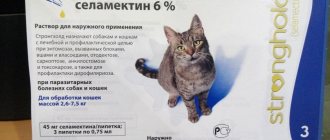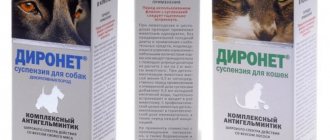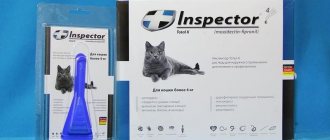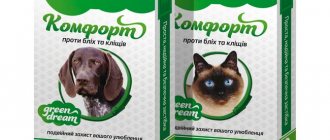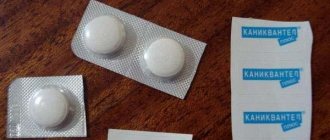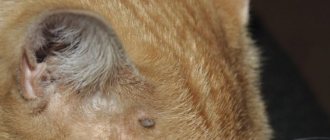In veterinary practice, hydrogen peroxide for cats is used for various purposes. With the help of this substance, it is possible to induce vomiting in a pet in case of poisoning, peroxide helps in treating wounds, and is effectively used in the complex treatment of ear parasites. Despite the effectiveness of treatment, it is not recommended to use peroxide on pets on a regular basis.
What are the healing properties of peroxide?
The substance is a solution that is prescribed for the treatment of damage to the skin and mucous membranes. Veterinary medicine involves the use of hydrogen peroxide to treat wounds, including purulent wounds, various scratches, and ulcers. With the help of this substance, it is possible to rid the affected area of the skin of pathogenic microorganisms, remove dirt, pus and blood. The mechanism of action of the drug is based on the release of active oxygen from tissues, which makes it possible to achieve protection against pathogenic bacteria and cleanse injured areas of the skin from dead cells.
Hydrogen peroxide gets into your eyes: what to do in this case?
- Rinse the affected organ of vision with plenty of water (running) to reduce the concentration of the solution and remove it from the mucous membrane;
- Apply Levomycetin or Lidocaine eye drops, if you have them on hand. They will partially soothe the mucous membrane and prevent the development of complications (spread of infection, etc.);
- Take a horizontal position, close your eyes and cover them with a dry cloth. Lie quietly for 5-10 minutes.
- Seek help from your doctor.
What is it used for?
Kittens and older cats are extremely active, inquisitive and playful animals. Especially those that have free access to the street. During walks, pets can receive various traumatic injuries, abrasions, and wounds. Cats actively fight for their territory and enter into fights with other animals. If the owner notices any damage to the cat’s skin, hydrogen peroxide will come to the rescue.
Some owners use this medication when they need to clean their furry's ears.
Some breeders prefer to use the substance to clean their pets' ears. However, veterinarians note that the use of this medication is not advisable, since it not only removes pollution, but can also cause excessive dryness of the auditory organs. In this situation, the cat begins to experience discomfort, her ears itch, which is why she actively scratches them, causing damage. Hydrogen peroxide for the hearing organs is used in veterinary practice to get rid of parasites. One of the most popular is the ear mite, which provokes the occurrence of otodectosis. The described substance is prescribed in combination with other medications. Hydrogen peroxide helps clear pus, dead cells, and scabs from your cat's ear canal. In addition, peroxide is also used to induce vomiting in kittens when the body is intoxicated.
Is it possible to rinse your eyes with peroxide?
In some cases, diluted peroxide with a concentration of 0.5-1% is used to wash the organs of vision in case of inflammatory diseases, for example, conjunctivitis. To do this, the substance purchased at the pharmacy is diluted with clean water in a ratio of 1:5 or 1:6. The resulting mixture is instilled under the eyelids for disinfection.
It is believed that a weak solution will not cause irritation and does not harm the organs of vision. However, many are interested in whether it is possible to wipe their eyes with peroxide, or whether it is better to use special drops. Doctors strongly recommend the use of modern medications to treat conjunctivitis and other eye diseases. They are more effective and safe because they have a combined and gentle composition. You can wash your eyes with these products without fear for their health, as is the case with peroxide.
Instructions for use
Treatment of cats with hydrogen peroxide requires the owner to comply with the following principles of therapy:
If the animal’s skin was damaged more than 2 hours ago, then there is no point in using the drug.
- Use the substance no later than 2 hours after injury to the skin.
- It is good to secure the kitten in your arms so that it cannot resist. The assistance of a second person may be required.
- Do not use hydrogen peroxide for an extended period as cell death may occur.
When treating wounds
If the kitten is injured, it should be treated as soon as possible. The owner will need to arm himself with a cotton swab, which must be soaked in hydrogen peroxide. Then, using it, you need to carefully treat the damaged area of the skin. Veterinarians recommend applying a sterile bandage to the treated area to prevent the cat from licking the wound.
Otherwise, the possibility of poisoning and vomiting cannot be ruled out.
From parasites
After using this antiseptic, you can proceed to instilling the necessary drug into the animal’s ears.
If we are talking about ear mite therapy, the owner will need to act following the following algorithm of actions:
- It is good to restrain the cat so that it does not resist and cannot scratch the owner.
- Take cotton sponges and soak them in a 2% hydrogen peroxide solution.
- Carefully treat the ears.
- Use the medication prescribed by your veterinarian. To get rid of ear mites, ointments, creams, and drops are used.
In case of poisoning
If your kitten is diagnosed with poisoning, it may be necessary to induce vomiting. For these purposes, a 3% solution of the substance is used. For 2.5 kg of cat's body weight you will need to take 5 ml of hydrogen peroxide. The medication is drawn into a syringe without a needle and carefully poured into the oral cavity. The medication will need to be given every 10 minutes until at least 3 doses have been ingested by the pet. It is important to administer the product carefully. First of all, you will need to place the syringe behind the fangs and gently press the plunger. No more than 1 milliliter of hydrogen peroxide should drip onto the tongue. Then the owner will need to wait for the cat to swallow, and then pour in the next milliliter. It is strictly forbidden to administer the entire amount of the substance at once, since the cat may choke and the substance will end up in the lungs.
How to care for the eyes of dogs and cats
#advice-from-the-vet-point
The living conditions for our four-legged pets, unfortunately, are moving further and further away from what is “naturally appropriate.”
Low humidity in city apartments, an abundance of house dust in dry apartment air, city dust mixed with concrete dust, residues of fuels and lubricants and de-icing agents - all this does not have the best effect on the condition of the eyes of our pets.
Therefore, even the eyes of our four-legged city dwellers, healthy from allergies and infections, often need additional care.
Do your pet's eyes need our help?
Some naturally healthy and adaptable animals do not require eye care throughout their lives. Others cannot last even a day without the help of their owner.
This can only be determined in relation to the conditions in which your dog or cat is currently kept. When moving to another place of residence, the condition of the eyes (if it is not an infection) can change significantly without human intervention.
Signs of eye problems are often visible to the naked eye. The main thing is to pay attention to them in time:
- Dry crusts quickly accumulate in the inner corner of the eye and have to be removed by rinsing or simply using your finger.
- The eyelids are swollen and “stuck together.”
- Excessive tear production is observed, and moist “tracks” form under the eyes.
- The discharge from the eyes is thick, it dries on the eyelashes or is visible on the surface of the cornea in the form of translucent clots.
If you notice any of the above in your pet, then he cannot do without your help.
Please note that all further recommendations are given for animals that have normal body temperature, are active, have a good appetite and normal level of thirst, preserved stool and urination, and in general - for those that are clinically healthy .
If your pet’s condition gives you any concern, contact your veterinarian immediately, because discharge from the eyes can be only one of the symptoms of an infectious or other serious disease.
Discharge from the eyes can be a sign of a serious illness!
What is used to treat the eyes of dogs and cats?
The simplest thing you can use is saline solution (sodium chloride 0.9%). It can be used to wash the eyes in unlimited quantities and as often as necessary. It should also be used when you suspect an eye injury in your pet. In this case, other means can be downright dangerous!
If you suspect an eye injury, wash off the crusts and rinse the eye with sterile saline or, as a last resort, boiled water. It is dangerous to use other remedies without consulting a doctor!
In addition, to care for your pet's eyes, you can use special lotions or drops designed specifically for eye care. These are lotions already familiar to us, “Vetoquinol” or “Global-Vet”, as well as the “Phytoelita” series (Veda LLC) and “Diamond Eyes” drops (“Agrovetzaschita” - “AVZ”). Be careful, sometimes pets may have an allergic reaction to a specific lotion. In this case, the use of such lotion should be stopped immediately.
Read labels carefully and use products exactly as directed.
I will also voice a finding from the owners of my patients, confirmed by years of successful observations: you can take care of your pet’s eyes using contact lens fluid. The composition of these liquids provides effective disinfection, mechanical rinsing of irritants, moisturizing and protecting the cornea and conjunctiva of our pets' eyes.
Herbal infusions and teas, can they be used to wash the eyes?
Separately, I would like to say about infusions of medicinal herbs for washing the eyes of pets: chamomile, sage, calendula, green tea, etc. Such infusions are very useful, however, there are two important points: the possibility of an individual allergic reaction to infusions and the need to carefully filter or settle the infusion before use, so as not to injure your eyes with the remains of herbs.
To preserve the benefits of infusions and not spend a lot of time on preparation. You can make an herbal infusion and freeze it into cubes. As necessary, infusion cubes can be thawed (for example, by diluting with a small amount of boiling water - in this case, the frozen infusion should be more concentrated than necessary for consumption) and used to wash the pet's eyes.
Separately, there are questions about whether it is possible to wash the eyes of dogs and cats with tea?
And, if possible, then what kind, fresh or “sleeping”, standing? And is it possible to use tea “in bags” for this?
Tea is a herbal infusion like the others. Fresh green and black tea have an irritant and antimicrobial effect. Standing tea contains tannin, a tanning and disinfectant substance. It is not recommended to rinse your eyes with fresh tea due to its irritating effect.
“Sleeping” standing tea can be used once or twice (before purchasing a more suitable product) to wash the eyelids of a dog or cat in “field conditions” when they are inflamed. Why should tea be “sleepy”? So that the concentration of tannin in it is not higher than desirable.
Like any other herbal infusion, tea must be filtered. The easiest way is to wrap wet “sleeping” tea leaves in several layers of clean cloth or sterile gauze (bandage) and rinse your pet’s eyelids, removing crusts of discharge from them. Try not to get any excess tea deep into your eyes.
Can tea bags be used? This is highly undesirable due to its poor quality and the abundance of “tea dust” that can get into the eye even after filtration.
Do not use tea bags to wash your eyes - it is dangerous!
How to wash eyes for dogs and cats
It is advisable to wash your pet’s eyes from 1 time a day (at night) to 3 times a day (for example, after each walk), generously moistening a cotton pad with the liquid of your choice and moving it along the eyelid towards the inner corner of the eye. Possible directions are from the outer corner of the eye to the inner, around the eyes, from the center to the periphery.
Only those products that are intended for this purpose can be injected directly into the eyes!
Read the label carefully and remember that “for washing the eyes” and “for caring for the hair around the eyes” are not the same thing!
When washing your eyes, try to use solutions and lotions at room temperature, or better yet, at body temperature. Cold solutions can cause discomfort in your pet and problems with his eyes in the future.
Do not use cold eye washes!
Strictly observe the expiration dates of lotions and solutions - there is no need for extra germs in your eyes!
If washing within 3-5 days does not cause a significant improvement in the condition of the eyes and a reduction in discharge, be sure to consult a veterinarian .
If the advice of a general practitioner does not help within a week, do not wait for “sea weather” and contact a veterinary ophthalmologist !
Healthy and shining eyes to your pets!
Natalya Troshina, veterinarian (DVM)
Is mole injury really dangerous?
In RuNet, the danger of traumatizing moles is given excessive, in my opinion, importance. Is there any justification for this point of view? Absolutely, but I think it's quite shaky.
Indeed, there are several studies on this issue, mostly conducted in the 60s–80s of the last century. They show that 30–50% of patients in whom melanoma developed against the background of a nevus noted single or repeated trauma to the mole.
There are several arguments against these studies:
- Just because melanoma develops after trauma to a nevus does not necessarily mean that the two are related. Melanoma could develop both before trauma and much later for other reasons .
- A 2010 meta-analysis (summarizing data from 9 studies) showed that performing an incisional biopsy does not affect the prognosis of melanoma. In other words, if a piece is cut off from melanoma (for diagnostic purposes), this will not negatively affect the patient’s chances of living 5 years or more.
- The conclusions of the authors of several studies (55, 115, 147 and 498 patients) agree on one thing - incomplete removal of nevi, except for dysplastic ones with severe dysplasia, does not lead to the development of melanoma.
Here the corrosive reader will say: “Aha! Still, incomplete removal (you can read “trauma”) causes the development of melanoma!” No. A dysplastic nevus with severe dysplasia itself has a high chance of becoming melanoma in the future. The connection between incomplete removal and the development of melanoma from such nevi has not been proven .
- My experience. Almost every day people write to me who have injured a mole and are now preparing to “die” because they have read too much on the Internet. Almost any person who has a mole protruding above the skin has injured it in one way or another at least once in their life. If trauma to a mole were really a risk factor, in our country with a population of 146,000,000, the diagnosis of melanoma would be made much more often than 8,000 times a year.
Symptoms
Depending on the specific damaging factor, the clinical picture of an ophthalmic burn may vary, but the most typical symptoms are:
- redness and swelling of the eyelids;
- swelling of the mucous membranes (conjunctiva of the inner surface of the eyelids and eyeball);
- general redness of the eye;
- intense, even unbearable, pain;
- blepharospasm (involuntary contraction of the muscles that control the movement of the eyelids);
- painful reaction to light, even soft and diffused;
- increased lacrimation;
- inflammation of the blood vessels of the eyeball;
- abnormal values of intraocular pressure (both hypo- and hypertension are possible);
— clouding of the cornea;
- a sharp deterioration in visual acuity and clarity, narrowing of the fields.
In case of radiation injury, symptoms may initially be limited to the latter symptom; with an infrared or laser burn, the affected tissue intensively scars, and vascular neoplasms appear (neovascularization).
There are four degrees of burn severity. Of course, the specific degree of damage depends on many factors (physical and/or chemical characteristics, total area of damage, duration of destructive effects, etc.).
Starting with a second degree burn, hospitalization is mandatory.
Reviews
Anna, 25 years old, Smolensk:
“When the cat had conjunctivitis, the veterinarian recommended washing her eyes with Furacilin solution. She dissolved the tablets in water, soaked a cotton swab in the product and gently rubbed it over her festering eyes. The treatment was successful, after 2 days the cat felt better.”
Sergey, 32 years old, Saratov:
“The cat ran outside and returned home a few hours later with a scratched face. I called the veterinary clinic, they advised me to prepare a Furacilin solution and treat the wounds. The next morning the scratches were dry and didn’t bother me.”
Igor, 35 years old, veterinarian, Rostov:
“I often recommend that cat owners wash purulent wounds on their pets’ bodies with Furacilin solution. Animals easily tolerate this treatment and there are no side effects observed.”
How to properly monitor a mole after an injury?
To objectively track changes in a mole, after the inflammation has subsided, you can take a photograph of it against the background of a ruler and compare the original image with subsequent ones. In order for the photo to be of high quality and comparison possible, the following rules must be observed:
- The photo must be taken with a camera, not a phone.
- The photo should not be a “selfie”. In such photographs, the mole is usually out of focus.
- A light source or camera flash should be directed at the mole.
Treatment of eye burns
Further therapeutic strategy is determined by the nature of the lesion and complications that have developed. In different situations, antibiotics and anti-inflammatory drugs, antioxidants and vitamin therapy, regeneration stimulants, detoxification measures, and analgesics may be prescribed. In more severe cases, surgical removal of necrotic tissue, partial or complete transplantation of the cornea and/or conjunctiva, plastic surgery in the presence of a disfiguring eyelid defect, etc. are necessary.
2.Signs of an eye infection
After an eye burn, it is important to watch for possible signs of an eye infection.
. These include:
- Eye pain;
- Sensation of a foreign body in the eyes;
- Yellowish, greenish, or bloody discharge from the eyes;
- Increased sensitivity to light (photophobia);
- Redness of the eyes or eyelids;
- High temperature without other reasons for this;
- Blurred and impaired vision.
If there are any signs of eye infection after a burn, it is important to consult a doctor. In addition, a visit to the doctor is necessary after a chemical burn to the eyes in order to notice eye damage in time and avoid deterioration or loss of vision.
Visit our Traumatology and Orthopedics page
Chemical burns
They occur upon contact with any substance (in any state of aggregation - from steam to solid crystals or powders) that corrodes or dissolves living organic tissue. The most common burns are caused by acids (usually in hazardous industries) and alkalis (usually in everyday life - ammonia, quicklime, caustic soda, etc.). In this case, a burn with a concentrated alkali, as a rule, is much more dangerous and severe than an acid one: the acid destroys only the volume of tissue with which it reacted, while the alkali continues to corrode the tissue and penetrate deeper and deeper until it is completely removed from the eye.
Therefore, in case of any chemical burns, the key importance in saving the visual organs is the speed and literacy of pre-medical medical (self) help.

